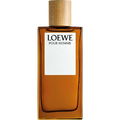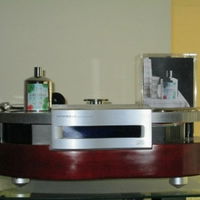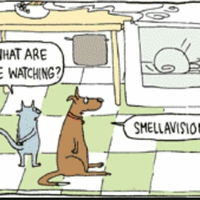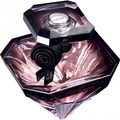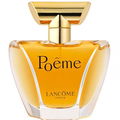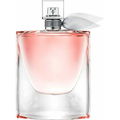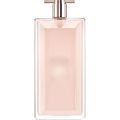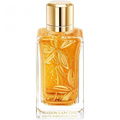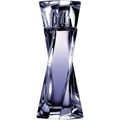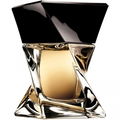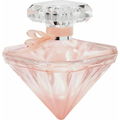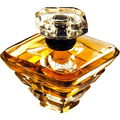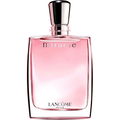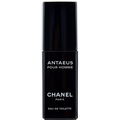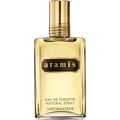11/23/2011

Apicius
224 Reviews

Apicius
Helpful Review
4
A Fine Woody Chypre
Thanks to Chanelle's gift, I have some miniature perfume bottles before me on my desk. Strange – long gone perfumes seem to survive in this tiny form. So, today I can spend time on Lancôme. This brand seems to be past its prime as far as gentleman's fragrances are concerned: only few classic perfumes are available here and there.
Personally, I connect Lancôme with chypre. Maybe I do them wrong, and they sureley do provide different styles. But it is ground-breaking chypres that come to my mind when I think about Lancôme. There is the beautiful oriental chypre Sagamore which was lately available for some time. And of course the signature scent of this brand: Ô de Lancôme, which so beautifully combines fresh, green airiness with the deep and dark style of chypre.
Balafre, too, can be labelled as such – even though it does not completely match with the doctrine. Just look at the scent pyramid – it is obvious they did not take half measures. The mere diversity of scent notes promises an experience of high complexity that is far away from ultra-modern purism.
Balafre starts opulent, but with sharpness. The head note is a hotchpotch that does not lead you into a particular direction at first. Its sharpness makes one sceptical – but there were times when a biting note was regarded as an expression of masculinity.
After some time, a specific scent note crystallizes that seems to already have been out of fashion in the sixties: I mean a coniferous note, like it can be found in Acqua di Selva, which had been popular one decade earlier. However, it stays discreet and soon steps back into the composition.
Then, the chypre base comes up and begins a dialog with a slightly soapy musk note. This soapyness rather resembles a good shaving soap rather than ordinary soap. After this, a very straightforward cedarwood note emerges, such as we are presented today in Terre d'Hermès in a very distinct way.
After some time, the sharpness from the beginning fades away – what enfolds itself here is an extremely fanned-out picture, a real explorer's scent: you may find green notes, leather and several more.
Balafre originates from a time period where men woud splash their perfumes and colognes, not spray them. This makes a difference, especially with such multi-layered perfumes like Balafre. With Balafre, I experience that application of different amounts of the perfume do not only affect the intensity, but also the fragrance itself. It could well be worth applying this perfume in different ways, and then sense what happens.
What a pity Balafre is among the discontinued perfumes! So, most contempoaries do not have the opportunity to get involved with this complexity. With the disappearance of perfumes like Balafre, we did not just loose some fragrances, to some extent we lost the opportunity to cultivate the scent. Let us look at Terre d'Hermès: a cedar wood note – which I admit is wonderful – is beeing placed into the center of the fragrance. Anything else is accessory. But the cedar note is directly imposed on the perfume lover – nobody has to take the effort of tracing it. I do not hold anything against this successful perfume, but the difference between those two is somewhat like between a simple stew and fine cuisine.
Surely, the chances of Balafre on today's perfume market would not be a quarter as good as those of Terre d'Hermès. Nevertheless, I think it should be wrong to muse about the good old times. The reason for Balafres' success forty years ago was definitely not that the customers of that period had more sensitive or better-educated noses. I think, it is more the conditions of the perfume market of the past: single brands instead of global players, and quite a sellers market had created a situation of higher quality awareness in the industry. But who knows – maybe the customers of that period too would have voted for Terre d'Hermès if they just had had the chance to.
We cannot turn back time, but it is always worth to find out what perfumes like Balafre have to tell us contemporaries. If we ever want to get back perfumes like Balafre, we have to deliberately work on the development of a general fragrance culture – only then will well-skilled niche perfumers be able to stay on the market with fine, complex scents that do not need any gimmicks. We have eaten stew long enough!
Personally, I connect Lancôme with chypre. Maybe I do them wrong, and they sureley do provide different styles. But it is ground-breaking chypres that come to my mind when I think about Lancôme. There is the beautiful oriental chypre Sagamore which was lately available for some time. And of course the signature scent of this brand: Ô de Lancôme, which so beautifully combines fresh, green airiness with the deep and dark style of chypre.
Balafre, too, can be labelled as such – even though it does not completely match with the doctrine. Just look at the scent pyramid – it is obvious they did not take half measures. The mere diversity of scent notes promises an experience of high complexity that is far away from ultra-modern purism.
Balafre starts opulent, but with sharpness. The head note is a hotchpotch that does not lead you into a particular direction at first. Its sharpness makes one sceptical – but there were times when a biting note was regarded as an expression of masculinity.
After some time, a specific scent note crystallizes that seems to already have been out of fashion in the sixties: I mean a coniferous note, like it can be found in Acqua di Selva, which had been popular one decade earlier. However, it stays discreet and soon steps back into the composition.
Then, the chypre base comes up and begins a dialog with a slightly soapy musk note. This soapyness rather resembles a good shaving soap rather than ordinary soap. After this, a very straightforward cedarwood note emerges, such as we are presented today in Terre d'Hermès in a very distinct way.
After some time, the sharpness from the beginning fades away – what enfolds itself here is an extremely fanned-out picture, a real explorer's scent: you may find green notes, leather and several more.
Balafre originates from a time period where men woud splash their perfumes and colognes, not spray them. This makes a difference, especially with such multi-layered perfumes like Balafre. With Balafre, I experience that application of different amounts of the perfume do not only affect the intensity, but also the fragrance itself. It could well be worth applying this perfume in different ways, and then sense what happens.
What a pity Balafre is among the discontinued perfumes! So, most contempoaries do not have the opportunity to get involved with this complexity. With the disappearance of perfumes like Balafre, we did not just loose some fragrances, to some extent we lost the opportunity to cultivate the scent. Let us look at Terre d'Hermès: a cedar wood note – which I admit is wonderful – is beeing placed into the center of the fragrance. Anything else is accessory. But the cedar note is directly imposed on the perfume lover – nobody has to take the effort of tracing it. I do not hold anything against this successful perfume, but the difference between those two is somewhat like between a simple stew and fine cuisine.
Surely, the chances of Balafre on today's perfume market would not be a quarter as good as those of Terre d'Hermès. Nevertheless, I think it should be wrong to muse about the good old times. The reason for Balafres' success forty years ago was definitely not that the customers of that period had more sensitive or better-educated noses. I think, it is more the conditions of the perfume market of the past: single brands instead of global players, and quite a sellers market had created a situation of higher quality awareness in the industry. But who knows – maybe the customers of that period too would have voted for Terre d'Hermès if they just had had the chance to.
We cannot turn back time, but it is always worth to find out what perfumes like Balafre have to tell us contemporaries. If we ever want to get back perfumes like Balafre, we have to deliberately work on the development of a general fragrance culture – only then will well-skilled niche perfumers be able to stay on the market with fine, complex scents that do not need any gimmicks. We have eaten stew long enough!













 Top Notes
Top Notes  Bergamot
Bergamot Chamomile
Chamomile Cypress
Cypress Green notes
Green notes Lavender
Lavender Neroli
Neroli Heart Notes
Heart Notes  Carnation
Carnation Cedarwood
Cedarwood Clary sage
Clary sage Pine needle
Pine needle Geranium
Geranium Base Notes
Base Notes  Oakmoss
Oakmoss Amber
Amber Leather
Leather Musk
Musk Vetiver
Vetiver